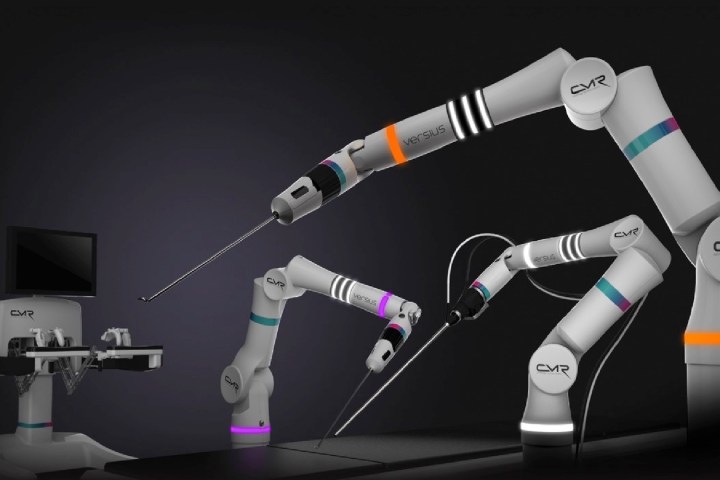
“Versius is CMR’s first surgical robot and will be the smallest the world has ever seen,” Martin Frost, CEO of manufacturer Cambridge Medical Robotics, told Digital Trends. “The robot’s remarkable dexterity, flexibility, and reach means that it can carry out more procedures more easily than any existing robot on the market. Its flexibility, together with its portability, means Versius is designed to be kept constantly busy, improving outcomes for patients and offering a more cost effective solution for health systems.”
Versius is around 2-foot-by-2-foot in size and its creators claim will cost less than half the price of the $2.6 million robots currently used to carry out keyhole surgery.
The robot is modelled after a human arm, with the arm and wrist articulations necessary to provide maximum flexibility to surgeons during a procedure. It is controlled by a surgeon, who can guide the robot during an operation on a separate 3D high-resolution display, located in the operating theater. The resulting ease of use means a reduction in the physical and mental strain placed on the surgeon, allowing them to more quickly and safely carry out procedures on patients.
“Versius will launch in Europe next year, following in other markets around the world shortly after,” Frost continued. “Five years from now, we hope to be one of the largest surgical robot companies internationally with a robot in every major hospital.” Global annual revenue for robot-assisted minimal access surgery is currently approximately $4 billion. It is expected to hit $20 billion by 2025.
Between this surgical robot, robotic cleaners in hospitals, and miniature injectable robots designed to carry out complex internal surgery, it is enough to get you pondering whether there are going to be any humans left in the hospital of 2030! With the exception of patients, of course.
Editors' Recommendations
- Boston Dynamics retires its remarkable Atlas robot
- Guinness video celebrates robotic record-breakers
- Autonomous delivery robots at center of bomb scare ‘prank’
- Security robots could be coming to a school near you
- Deep-diving robotic sub could be last hope for lost Titanic tourists


